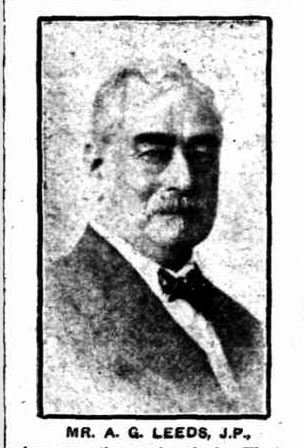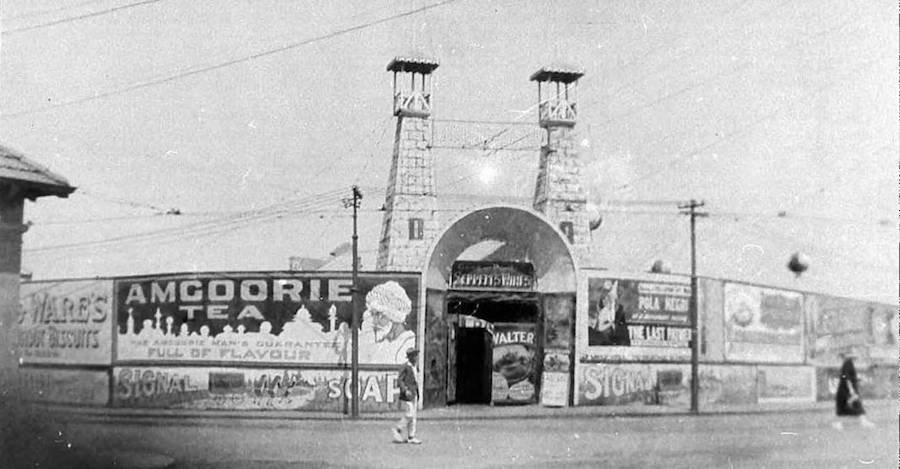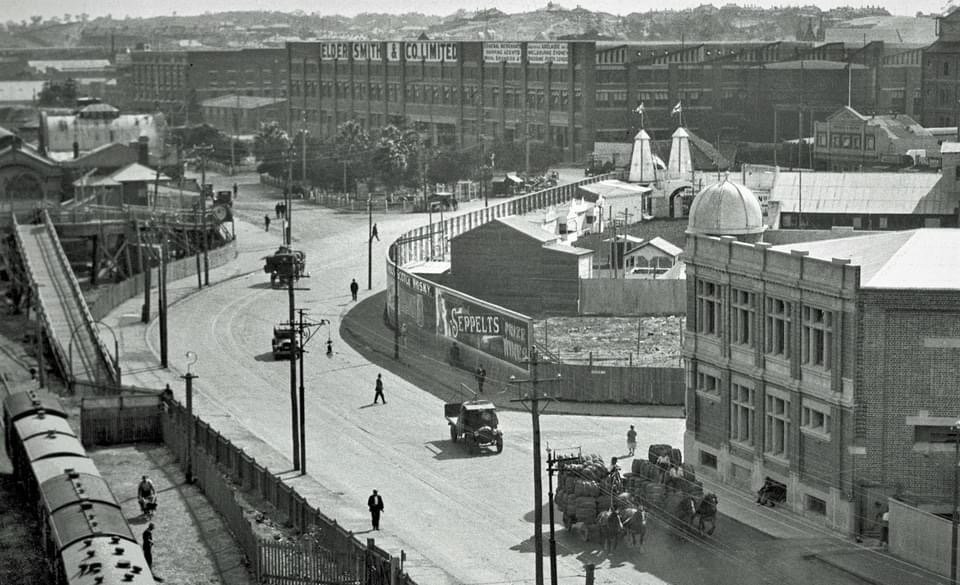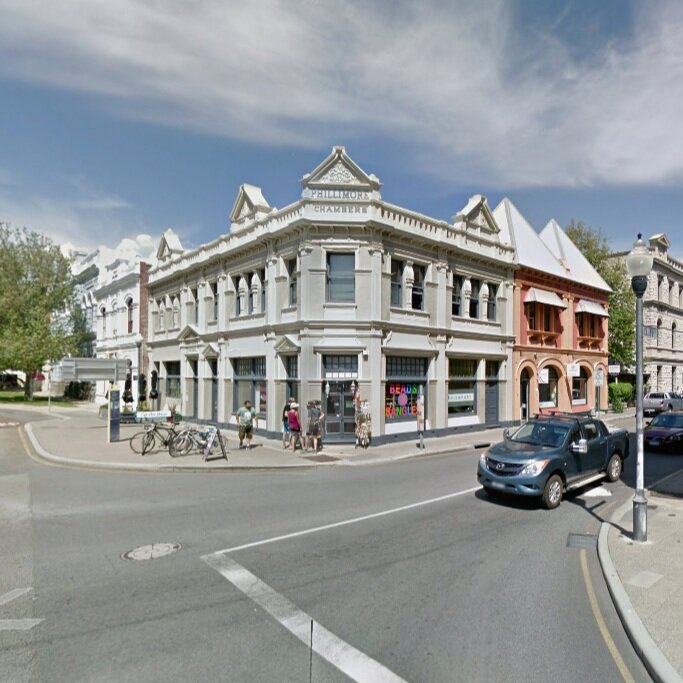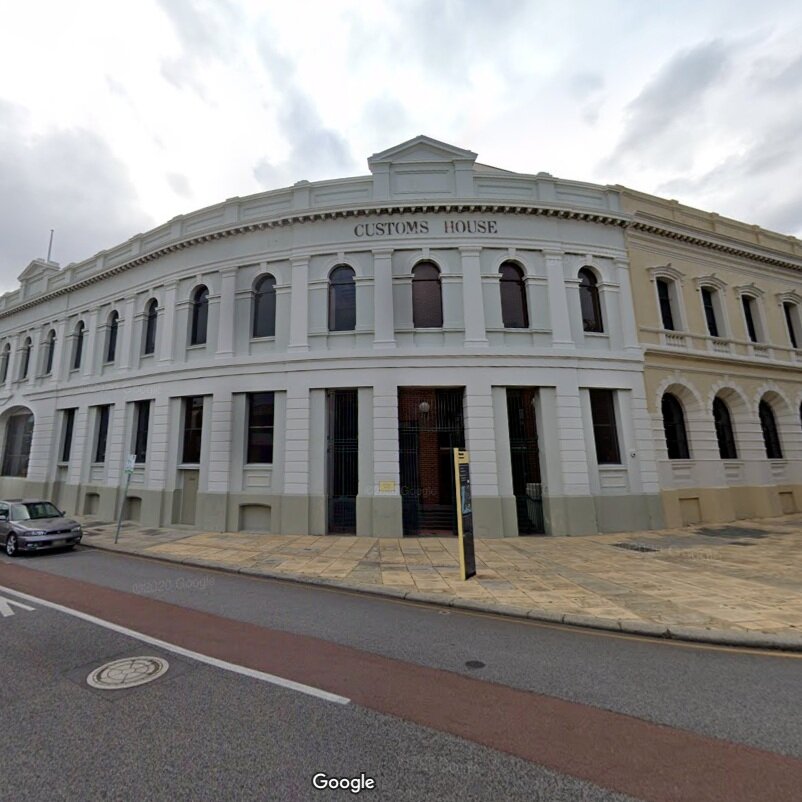This two storey face brick and rendered warehouse façade has a parapet and prominent pediment, The building has limestone foundations and the façade features ashlar effect rendering and large arched multi paned windows with drive through entrance on the east side. The first floor has Flemish bond face brick and slightly arched rendered recesses. It straddles the block with a south face onto 2 High st.
1902 Article about Dalgety’s new buildings in Fremantle- the warehouse, which has frontages to the railway, High-street, and to Philimore-street, has some 30,000ft. of floor space. The building was designed by and carried out under the supervision of Mr. J. Talbot Hobbs, F.R.I.V.A., of Perth and Fremantle. It is seldom an architect gets a commission to spend on one plot £30,000. This is the largest contract let (privately) in this State for a building, and the result seems to have given the greatest satisfaction to all concerned. The contractor for the building is Mr. W. H. Vincent, and the cost is nearly £30,000. (reference)
1917 Messrs. Dalgety & Co., report having held their usual weekly sale of hides, tallow etc, at the Wool and Produce Exchange, Dalgety's Buildings, Cliff-street, Fremantle, Friday, 9th February; Kangaroo Skins-This market is exceptionally keen, probably owing to the limited number of skins arriving… Kangaroo Skins: Greys- over 2|lb weight Is 5d2s, Reds- | lb weight and over 3s to 3s 6d, joeys to 2s per dozen, Euros- Is 6d to 2s 3d. Coast Wallaby to 2s per dozen. (reference)
1921 MR. A. G. LEEDS, J.P., who recently resigned the Western Australian managership of Dalgety and Co., Ltd., after being associated with that firm for over 40 years… in 1904 he was appointed as manager for Western Australia. At the inception of the Fremantle Harbor Trust he was appointed a Commissioner, which position he held for nine years, the latter half of which was spent as chairman… (reference)
1927 The building acquired by Elder, Smith and Co, Ltd is regarded as one of the finest in Fremantle. It occupies all the land between Phillimore street, Cliff street, High street with the exception of the portion used by the Union Bank and contains about 60 offices on two floors, and two-storey stores with a basement which measures 60ft by 200ft. (reference)
OCCUPANTS
Lot 1 & 2a owners: 1855 - 1859 Government, 1876 - 1879 George Shenton
1902 - 1938 Dalgety's Bond & Free Stores- had a long lease and continued to occupy the building (reference)
1938 - 1949 Elder Smith & Co Ltd, shipping agents, stk & stn agents & merchants
1971 Lionel Samson and Son used it as bond and liquor store
1983 Rug store
1996 Sold to consortium, Fremantle SBS Syndicate.
2000 redevelopment by Architect Ralph Hoare. Currently residential flats/apartment block



